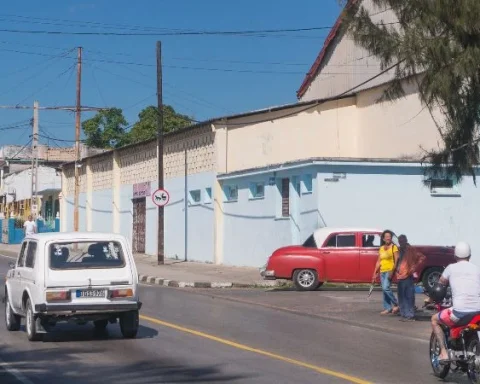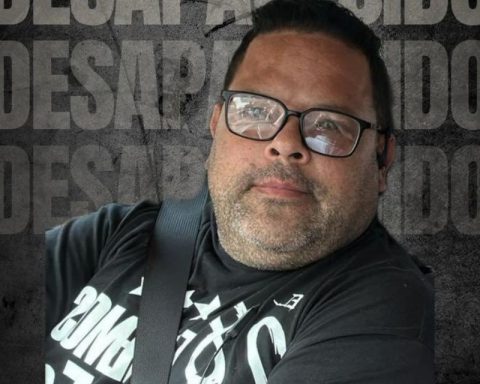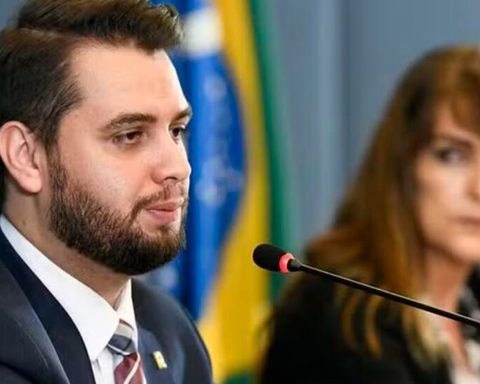The year 2023 began with a new femicide in Cuba, in the province of Guantanamo. This time, the events were reported by a local and state newspaper, the daily overcome. On January 5, a traffic officer, dressed as a civilian and not on duty, fired a firearm at his “alleged couple” and the driver of an ambulance, in which both were traveling. The woman died while she was being treated at the hospital, and the companion continues to receive medical attention.
The local newspaper, in its first report, described the events as a “crime of passion.” Strictly speaking, it is a femicide. The qualifier unleashed comments and reactions on social networks by journalists and people knowledgeable about gender-based violence. overcome rectified the initial post shared on Facebook. Based on what happened, the media referred to the events from a gender perspective.
The newspaper repeated a macho qualifier that has historically toned down the murder of women by their partners or ex-partners (the term “crime of passion”). But it is also true that the state press rarely covers these events and that, furthermore, there is a context of legal (not criminal) orphanhood in terms of gender-based violence.
The Cuban press and the femicides
On the map of the media in/from/for Cuba, when it comes to femicide, there are two predominant responses; both deeply revictimizing. One is the exacerbation and mismanagement of femicides, especially by non-state media with the clear intention of using the facts to insult the Cuban government and political system. On the other hand, there is silence and omission by state media; as if these events did not occur with the frequency that they do. The opacity and lack of transparency do not nullify the reality that they exist and are recurring.
The media or the coverage carried out under the paradigms of the feminist perspective are exceptional. These do not contain images of the body; they do not make references to the life, performance or conditions of the victim at the time of the facts; they do not offer exhaustive details about the crime; they respect the privacy of the victims and their families; They do not use mitigating qualifiers such as “crimes of passion”, “low passions”, “in the heat of anger”, “marital jealousy” or others that, indirectly, tend to justify the perpetrator and blame the victim for his own death.
For this reason, in order to consolidate knowledge and raise awareness about gender violence —and femicide as its extreme form—, it is essential to regulate and protocolize journalistic coverage of these events. In addition, the training of gender-sensitive journalists. And, above all, the political, institutional and state will that the facts receive attention, are recognized and made visible with the rigor required by the commitment to reduce femicides, and gender-based violence in all its forms.
Laws and Proper Terminology
In recent months, two regulatory bodies that regulate gender violence in a transversal manner have entered into force in Cuba, without any precedents in the country. Its about Family Code and the Penal Code.
The first operates on the family space, where crimes such as feminicide are not regulated. per se; and the second, regulated femicide but not in its nominal form. Its typification was absorbed by the crime of “murder”, despite being the criminal type most discussed by the National Assembly before the approval of the Penal Code.
Unfortunately, the express reference to femicide was ruled out by the General Secretariat of the Federation of Cuban Women (FMC), even when the director of Cenesex, with extensive experience on the subject, defended it.
In a context of vagueness and regulatory dispersion, we still do not have a comprehensive law against gender-based violence that, without resorting to punitive legal channels, orders, provides and regulates this structural problem that is rooted in our society.
Request for Comprehensive Law against gender violence in Cuba
It has been said countless times. If there is a comprehensive Law:
- we would have a norm of direct application with hierarchy of law. In such a way that all public instances, their officials and regulatory bodies would be equally linked and subordinated to it.
- State agencies would be bound by the term provided by law to dictate the regulatory changes that must be created. In this way, scheduling legal responses on gender issues, avoiding legislative gaps.
- the multidisciplinary intervention, intrinsic in the legal treatment against gender violence, would be deployed in an orderly and organic manner.
- other ends of the law would be endorsed; such as educational, preventive, axiological transformation and values, etc.
- the preventive treatment could be weighed with respect to the retributive principle of the sanction, avoiding the excesses of criminal proceedings, appealing to the intervention of other instances prior to the judicial process.
- training and awareness to dismantle naturalized imaginaries of gender violence would gain the force of law.
- Public policies would be arranged in an orderly and articulated manner that have as their axis the attention/reduction/eradication of gender violence. For example, the creation of shelters, specialized investigation and attention divisions, accompaniment with a gender perspective, comprehensive training programs for legal operators and investigative/police agents, etc.
- it could have objectives, definitions, governing concepts and a glossary of primary terms.
- the corresponding entities would have the obligation to periodically publish statistics on gender violence in Cuba, as well as the results of surveys on the subject. This would allow a consistent study of the impact of the measures and the effectiveness of the applied policies. It would make the objectives of the law itself measurable.
Although we have the National Program for the Advancement of Womenand with the Comprehensive Strategy against gender and intrafamily violence, neither of the two instruments are directly applicable legal provisions. Therefore, the need for a comprehensive law persists.
The mishandling of the terms to qualify a femicide, among other things, demonstrates the absence of a legal culture in terms of gender-based violence. The press and the media are actors that would have to be subordinated to the parameters established by the disputed, needed and desired law.
the militancy
As activists or militants we can point to newspapers or platforms that make mistakes in the handling of information; but we have, above all, the responsibility of demanding the deployment of an organized normative order that can prevent misunderstandings. Or that the existing instruments, such as the Comprehensive Strategy, are fulfilled. It has been more than a year since its entry into force, but there is no news of the changes that the initiative advocated in the institutional sphere.
In Cuba we have an outdated femicide rate (the latest official data available is from 2016 and was published in 2019) and it represents an underreporting when contemplating only intimate femicides; that is, perpetrated by the victim’s partner or ex-partner. This is the National Survey on Gender Equality, which dates from 2016. We do not have femicide or gender-based violence observatories, despite the fact that their creation was announced two years ago.
It is required that the state press cover cases of femicide in the correct manner and with the appropriate terms. However, this occurs in a context in which the approval of the classification of femicide in its nominal form was politically and legally refused; where deaths or disappearances of women due to gender reasons are hardly and very rarely reported; without a legal framework that contributes to raising awareness of the problem; with a lack of systematic and radical public policies (as much as gender violence is); and without a transparent visibility of the phenomenon (on the contrary, the extreme forms of gender violence are treated in such an opaque way that cover-up and impunity are reproduced).
The error of a local newspaper, in one of the most neglected provinces of Cuba, is not entirely theirs, nor is the media solely responsible. They had the will to communicate and, as happens on very rare occasions, also to rectify the error. It was also possible thanks to calls for attention. That’s what it’s all about, but not exclusively. Although what we have in front of us is the crooked tree, we cannot stop looking, and pointing out, the foundations that deform it.

















